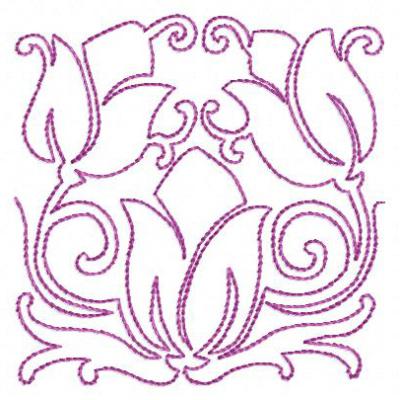The Tatar people have an ancient and colorful culture. His life, sorrows and joys, wars and alliances, way of life, and beliefs could not but be reflected in his work. Since the people are ancient, history and culture span centuries. In its everyday life and worldview, the nation was different from the neighboring tribes and was isolated. Therefore, for example, the Tatar ornament used to decorate clothes, household items, houses is original and peculiar.
Types of ornament and types of motifs
The lifestyle of the people noticeably influenced the patterns that decorated various products. Mostly the Tatar national ornament has a pronounced influence of ancient agriculture. But if you carefully study the work of the masters, you will notice that the influence of the livestock culture of the nomadic ancestors of the people is also manifested.
Tatar patterns and ornaments have three types of motifs: geometric, floral and floral and zoomorphic. A characteristic feature is their contour completion.
Floral and plant ornament and its use
Patterns have been used by masters from time immemorial in many areas of applied art: architecture, embroidery, painting, wood carving. Tatar ornament with floral and plant motifs is the most common. Masters create both simple forms and complex bouquets. The colors used for ornamentation are vibrant, rich and blend well. Motives are stylized and have many interpretations. An important role is played in the order in which the elements of the pattern are located and how they fit together.

In floral and plant motifs, which are used for creativity, there are three areas: steppe, meadow and garden. Depending on the area in which the master or craftswoman lived, certain Tatar patterns and ornaments prevailed. For the steppe direction, motifs depicting stylized poppies, tulips, forget-me-nots, carnations are more characteristic. Meadow motifs are full of flowers of wild rose, bell, chamomile, cornflowers. Garden areas were characteristic of urban settlements. It depicted mainly dahlias, chrysanthemums, roses, asters. The most common are two flowers that use the Tatar ornament. Tulip and cloves are the main motives.
Geometric and zoomorphic motifs.
Zoomorphic drawings are practically not used. This is explained by the requirements of religion, so the Tatar ornament very rarely contains images of animals. However, the masters, who nevertheless decide on zoomorphic motifs in their products, stylize them so much that it is not always possible to understand which animal is depicted.
Often, the geometric Tatar ornament is not an independent element of the product, but performs auxiliary functions. The use of shapes depends on what the image is applied to. For example, weaving is dominated by geometric motifs, and in embroidery - floral, geometrically arranged.
Elements used in the ornament. Their capabilities. Techniques for transmitting the wizard’s ideas
First of all, pay attention to how tulip is used in the Tatar ornament. It is presented in the form of a pointed trefoil with varying degrees of bending. Five-leafed leaves are less common. Wavy lines at your fingertips are overgrown with leaves and form a “vine”.
On one branch there may be grapes, and a meander, and a dahlia, and clove. The Tatar ornament with geometric motifs uses both simple figures (triangles, rhombuses, circles, squares) and complex (hexagonal sockets, step figures, eight-pointed stars).
Floral ornament has another distinctive feature - the asymmetry of the elements. On one branch, flowers coexist beautifully, which in nature never grow nearby or bloom in different months of the year.
The significance of the tulip in culture and ornament
Each nation has its own symbol, which matters only to him. Many masters use the Tatar ornament, in which the main motive is a tulip. For a given nation, this is, above all, a symbol of rebirth. Tulip is located on the flag of Tatarstan.
Secondly, the tulip is inextricably linked with the religious views of the Muslim world. The flower is associated with the name of Allah. The spelling of the name of the plant in Arabic consists of the same letters as the name of the god of the Muslim world. From the point of view of the numerological system of Abaj (each letter has its own number), the sum of the letters in the words "tulip" and "Allah" is the same and equal to 66.
Rosa also finds frequent reflection in Tatar ornaments. And again, for religious reasons: it is a symbol of the Prophet Muhammad. And although the flowers are very stylized, a person who understands the symbols and culture of the Tatar people will be able to read the Tatar ornament.